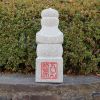Isseki Gorinto 4 (Five shaped towers made of one stone)
Isseki Gorinto(Single Stone Five-ringed Tower)
Created by me using mushiri finishing
Creating a Japanese mood
A stone object created through Japanese craftsmanship
A single-stone five-ringed tower is a stone object that creates a Japanese mood.
Isseki Gorinto(Single Stone Five-ringed Tower)
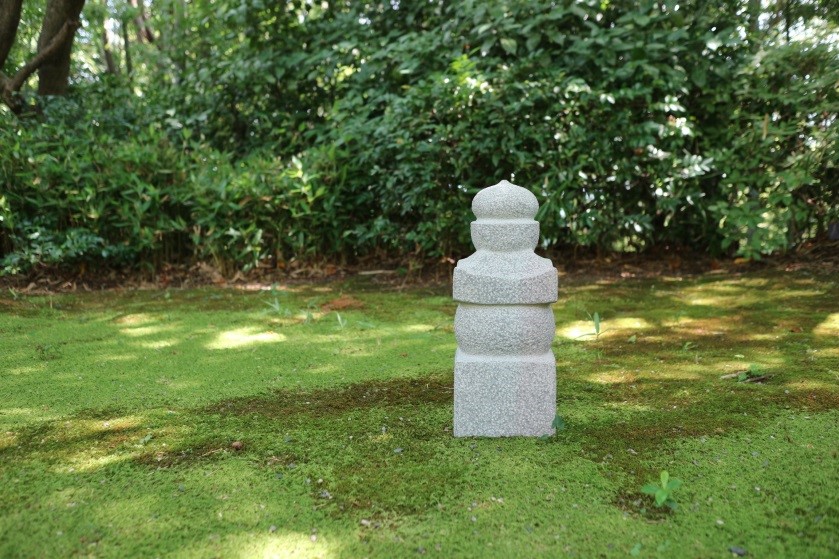
Created by me using mushiri finishing
Creating a Japanese mood
A stone object created through Japanese craftsmanship
A single-stone five-ringed tower is a stone object that creates a Japanese mood.
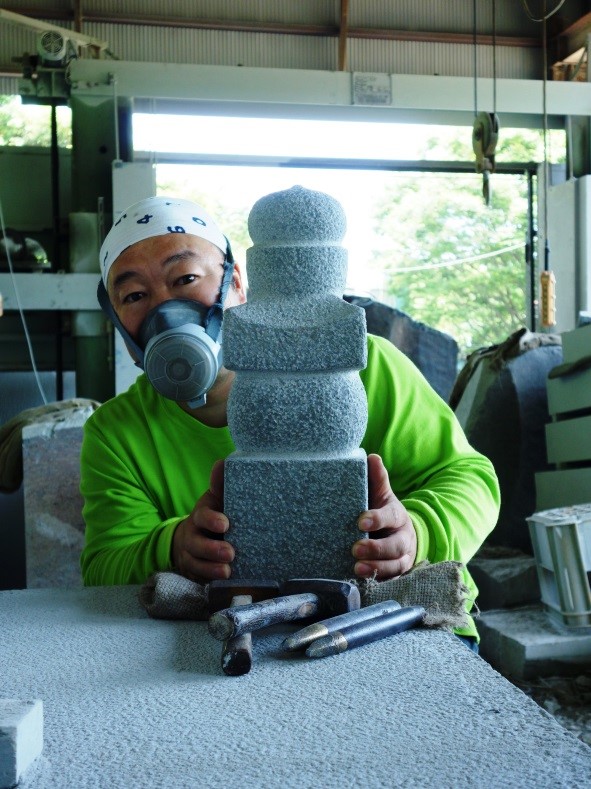
My name is Hiroshi Kamegawa and I own the business. My strength is creating stone objects known as Isseki Gorinto(single-stone five-ringed towers) using the mushiri finishing technique.
What is a five-ringed tower?
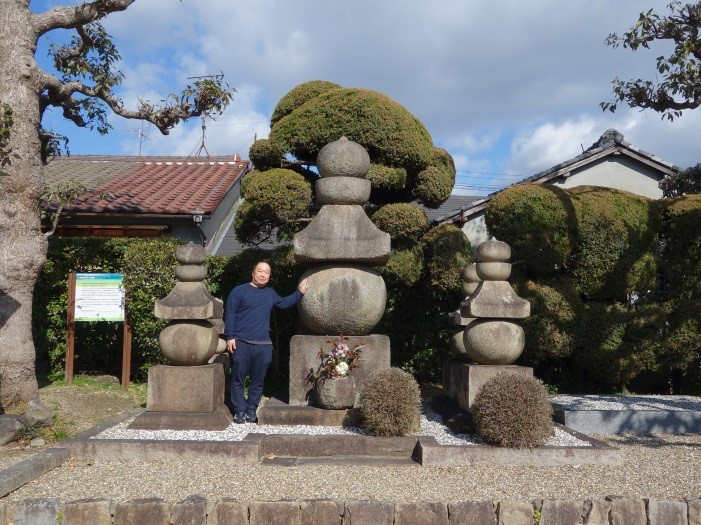
Five-ringed towers are forms that were born from practices aimed at achieving Buddhahood in the Shingon Sect of esoteric Buddhism. With a long history of 1,300 years, five-ringed tower have been used as memorial towers and gravestones in all sects of Buddhism in Japan since the late Heian period. Five-ringed towers comprise rings in five shapes: cube, sphere, pyramid, half-moon, and gem, representing the esoteric Buddhist concept of the five elements of the universe—earth, water, fire, wind, void—that make up the universe (every world). The Shingon high priest Kakuban (1095–1144) is said to have popularized five-ringed towers. Kakuban taught that “building five-ringed towers, the deceased can become one with the supreme Buddha in Buddhism, Dainichi Nyorai, achieve Buddhahood and enter paradise.” To this day, five-ringed towers are considered “the supreme gravestone that would please anyone.”
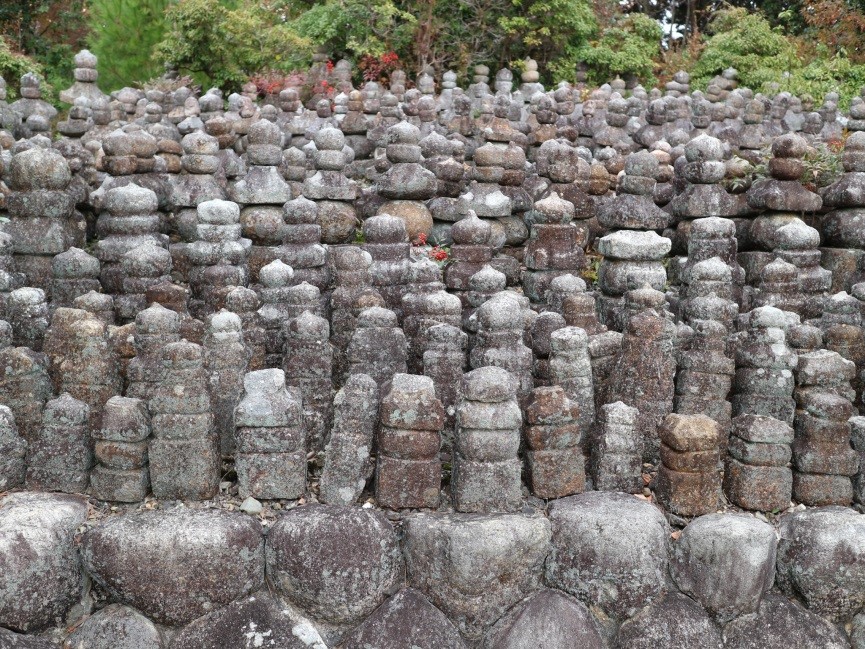
Single-stone five-ringed towers are small towers created from a single piece of stone. They are of a size that an adult can carry alone. I have made time to travel to Shiga, Nara, and Kyoto to study numerous single- stone five-ringed towers from the Muromachi period, which are said to be the most beautiful, and I have the technique to produce beautiful single- stone five-ringed towers.
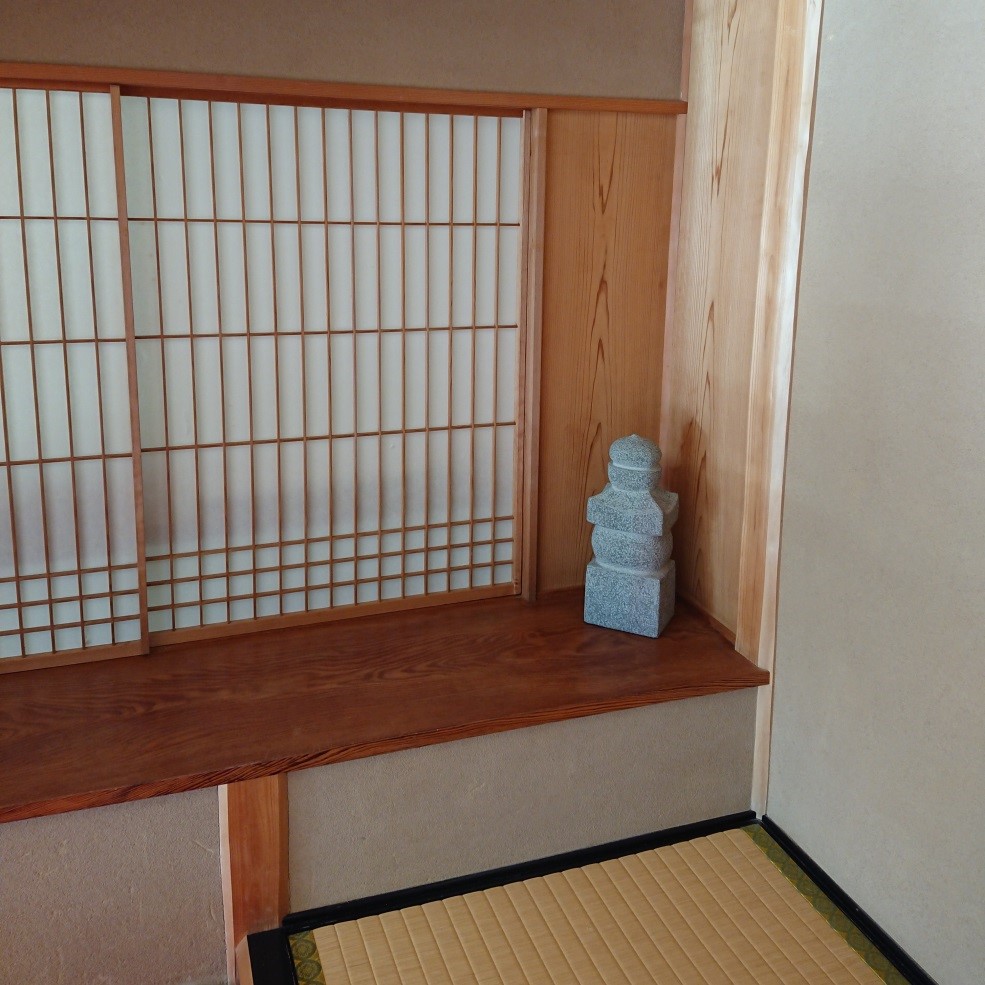
The single-stone five-ringed towers that we sell are about 40 centimeters in height. They can be placed in gardens or soba restaurants as objects to create a Japanese mood. For people of Japanese ancestry living outside Japan, they can be used instead of gravestones, as objects to express their gratitude for their father, mother, or ancestors. Installing a single-stone five-ringed tower in a shape that is an abstraction of Dainichi Nyorai, the supreme Buddha of Buddhism, is said to evoke the protection of this Buddha—it is a Japanese lucky charm. Single-stone five-ringed towers are only found in Japan, so installing one will create a pleasant Japanese mood.
Mushiri finishing, a traditional technique

Mushiri finishing is a time-honored, traditional Japanese method of processing stone. The stone surface is shaped and finished by hand using a chisel and hammer, one stroke at a time, in a laborious and demanding process, but the chisel marks that remain on the surface of the stone are very beautiful, and the towers carry the warmth unique to things handmade. When a single-stone five-ringed tower is placed outside, it slowly develops a deep character. My mission in my work is to bring the beauty of the time-honored, traditional technique of mushiri finishing to the world. It would be my pleasure if you would buy a piece created using this technique to enjoy Japanese craftsmanship. It is a pleasure to have people who love Japanese craftsmanship, “the real thing,” and fine Japanese handmade goods buy my work.
About honkomatsu stone

Honkomatsu stone is lava from volcanic activity in Hakone that occurred about 150,000 to 400,000 years ago. When used as stone to create gravestones, it is known as east yokozuna honkomatsu stone, and is a popular choice. This stone was used in large quantities to build the stone walls of Edo Castle (now the Imperial Palace). When the castle walls were being built, the stone was loaded onto boats and transported to Edo by sea. When the walls were completed, the shogunate distributed the left-over stone to the commoners. They were grateful for the stone, and called it “goyoishi,” and used it to create gravestones. This is why honkomatsu stone is known as “inscription stone.” Honkomatsu stone was also used for the grave of Tokugawa Ieyasu in Kuno-zan Tosho-gu Shrine in Shizuoka Prefecture.
These days, I call honkomatsu stone “endangered stone”
Honkomatsu stone has been quarried extensively since the Edo period. It was in demand due to limited reserves and became an exhaustible resource (a natural resource that cannot be supplied through natural processes at speeds higher than that of human consumption). There are a fixed number of areas in which it can be sourced, and there are no longer any mountains left unexploited. My company has been supplying good stone for four generations since the end of the Taisho era, but there are no longer any places to quarry the stone and good pieces (large blocks) can no longer be found. In other words, honkomatsu stone is a stone that will probably reach “extinction” in the near future. In the desire to make people aware of the difficulty of quarrying the stone and its scarcity, I decided to call the stone “honkomatsu stone, an endangered stone.” I wish to continue using this stone with great care
My company, Kamegawa Sekizai Ltd., was founded in 1923. The company sells honkomatsu stone, a stone material that can only be obtained in Manazuru.
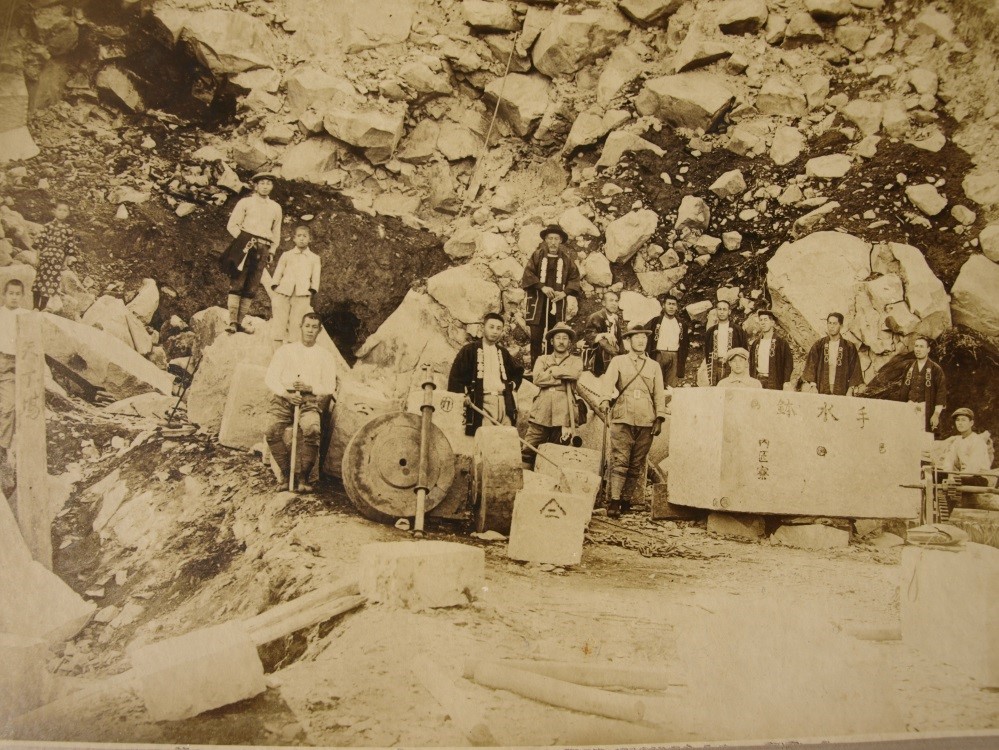
Photograph taken in 1927 (Showa 2), commemorating the offering of a water bowl to Tama Mausoleum
The first-generation Yonejiro offered a water bowl to Tama Mausoleum, the grave of the Emperor Taisho. The second-generation Yoshiji also served as an assemblyman for Manazuru, while the third-generation Eiichi offered materials to the mausoleum of the Showa Emperor. The honkomatsu stone that was offered can be seen even now. I am the fourth-generation of the family. In the period after I graduated high school, stonemasonry was a profitable business, so I rashly decided to take over the business and become a stonemason, thinking that I would be able to make easy money. When I think about it now, it’s quite absurd (laughs). When I told my father, who was the third-generation head of the business, he told me to “go become an apprentice and learn the trade.” Quite clueless, I joined a stonemason in the stone production area of Okazaki, Aichi Prefecture and studied for four years. During my training, I spent my time making gravestones and lanterns, while at night, I studied about stone in the stone processing department at Okazaki Technical Institute, which is a technical school. During my apprenticeship, I was at the bottom of the ranks, so I had lots of work to do. I was always thinking “how painful this is, how boring, how much I want to go home soon,” but I was able to make friends with other people from all over Japan who came for training, and I learned how to work by hand. When I think back, being able to discover the pleasure of making things by hand has left me with wonderful memories. I completed my training in 1998 and joined Kamegawa Sekizai. When I returned home from Aichi, where I had been studying, I returned with a wife (laughs). People who are aware of this still tease me saying: “Didn’t you go to Aichi to learn how to be a bridegroom rather than learning how to be a stonemason?”
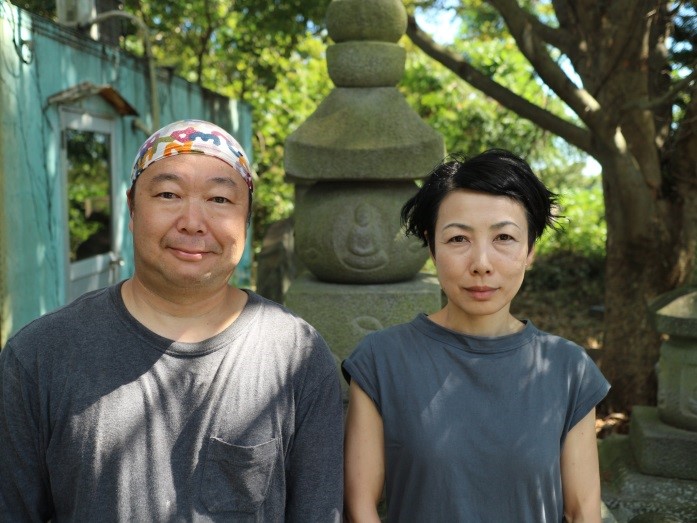
Single-stone five-ringed towers are stone objects that create a Japanese mood. I invite you to buy one so that you can enjoy Japanese craftsmanship and a wonderful handmade Japanese object.
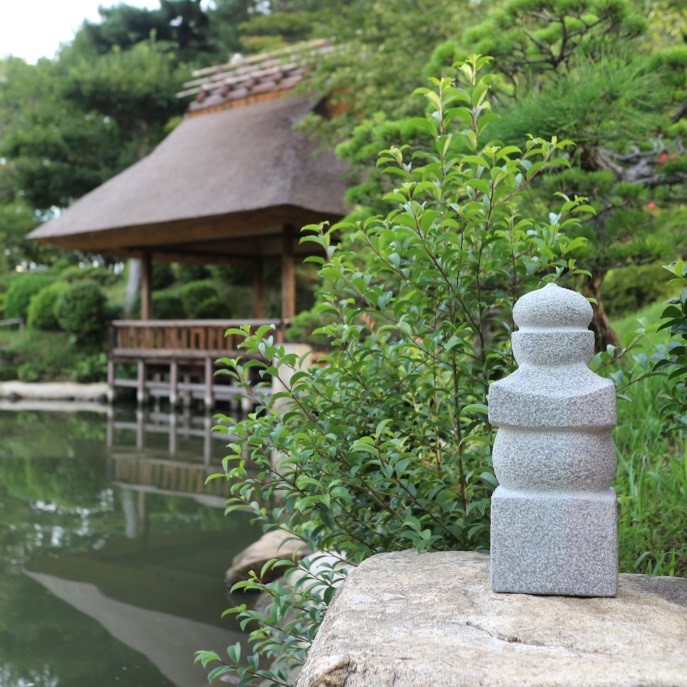
Precautions for handling a single-stone five-ringed tower
The stone hard and heavy, so exercise care when handling the tower. Be careful not to drop the object and injure your feet when removing it from the box. The stone may chip if dropped or is tipped over, so exercise due care. Dropping, dragging, or tipping a stone over on a table or on the floor will cause scratches, so exercise due care. When placing the tower on an easily damaged item, we recommend placing it on a cloth.




